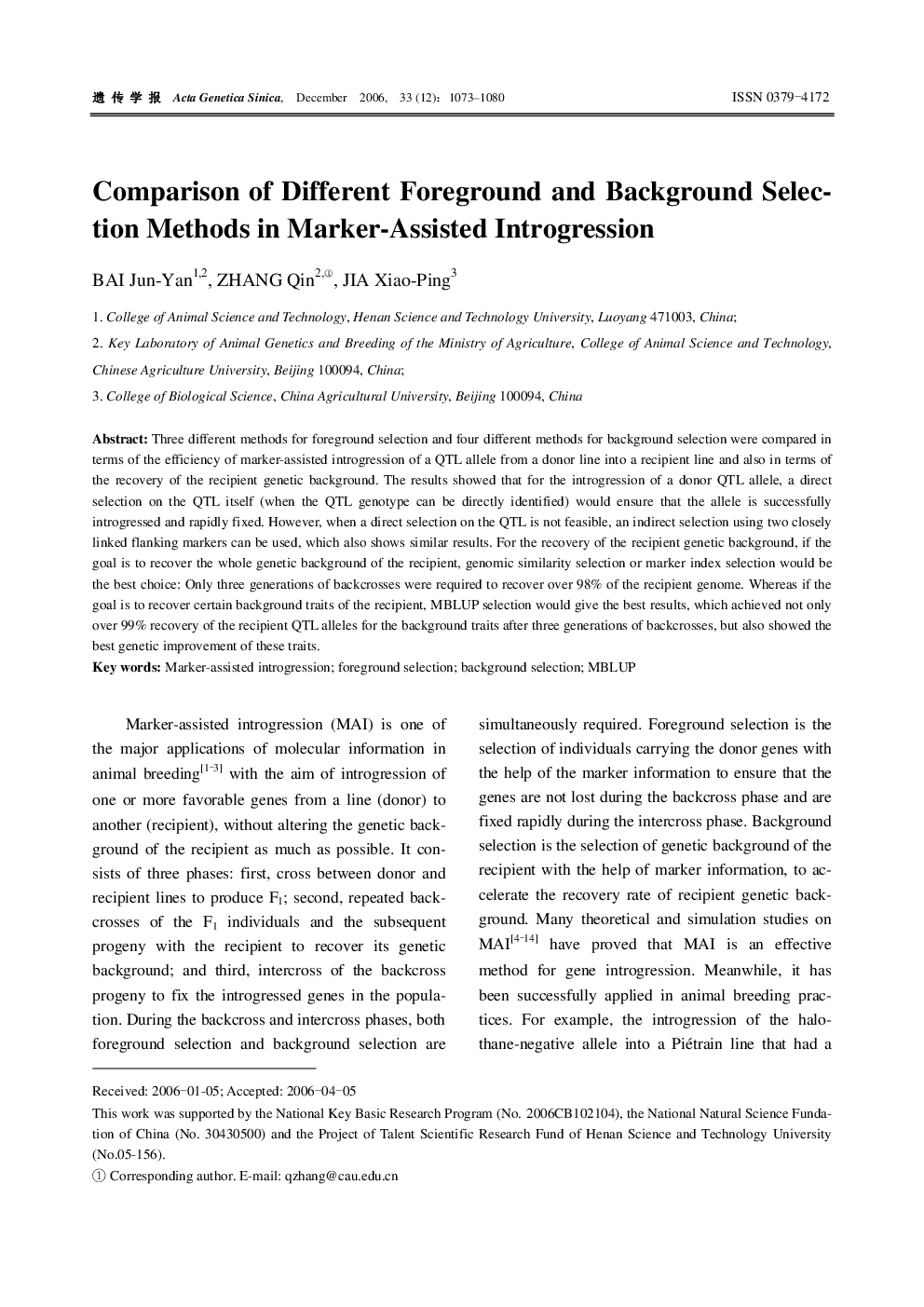| Article ID | Journal | Published Year | Pages | File Type |
|---|---|---|---|---|
| 2811173 | Acta Genetica Sinica | 2006 | 8 Pages |
Three different methods for foreground selection and four different methods for background selection were compared in terms of the efficiency of marker-assisted introgression of a QTL allele from a donor line into a recipient line and also in terms of the recovery of the recipient genetic background. The results showed that for the introgression of a donor QTL allele, a direct selection on the QTL itself (when the QTL genotype can be directly identified) would ensure that the allele is successfully introgressed and rapidly fixed. However, when a direct selection on the QTL is not feasible, an indirect selection using two closely linked flanking markers can be used, which also shows similar results. For the recovery of the recipient genetic background, if the goal is to recover the whole genetic background of the recipient, genomic similarity selection or marker index selection would be the best choice: Only three generations of backcrosses were required to recover over 98% of the recipient genome. Whereas if the goal is to recover certain background traits of the recipient, MBLUP selection would give the best results, which achieved not only over 99% recovery of the recipient QTL alleles for the background traits after three generations of backcrosses, but also showed the best genetic improvement of these traits.
